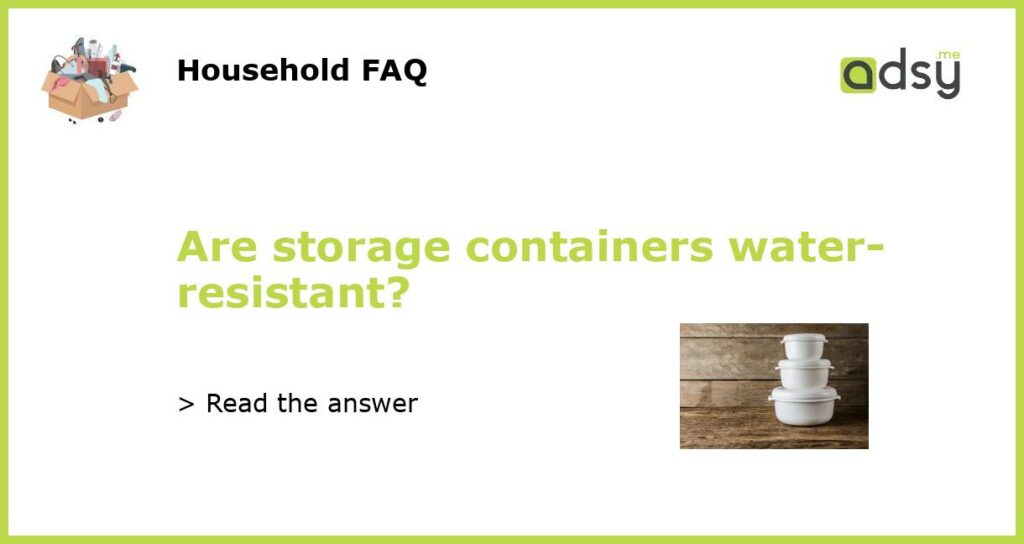Yes, storage containers are water-resistant
Storage containers are designed to protect the items stored inside from external elements, including water. Whether it is a plastic storage container, metal container, or even a cardboard box, they are designed to provide some level of water resistance. However, it is important to note that not all storage containers are created equal, and the level of water resistance may vary depending on the material and design of the container.
Factors affecting water-resistance of storage containers
Several factors contribute to the water-resistance of storage containers. Here are some key factors to consider:
Material
The material of the storage container plays a crucial role in determining its water-resistance. Plastic containers, such as those made from polypropylene or high-density polyethylene, are known for their excellent water resistance. These materials do not absorb moisture and are resistant to water damage. Metal containers, such as steel or aluminum, are also water-resistant, but they may be prone to rust if not properly coated or treated. Cardboard boxes, on the other hand, are less water-resistant and may easily become soggy and damaged when exposed to water.
Construction
The construction of the storage container also impacts its water-resistance. Containers with tight seals, such as those with rubber gaskets or snap-lock lids, provide better protection against water. These seals help to keep water out and prevent any leakage or seepage. However, containers with loose fitting lids or gaps in the construction may be more prone to water entry.
Design
The design of the storage container can also affect its water-resistance. Containers with sloped or angled tops are more resistant to water pooling on the surface, which reduces the chances of water seeping into the container. Some containers also feature raised bottoms or built-in drainage systems that help to keep water away from the items stored inside. These design features enhance the water-resistance of the container.
Usage
The intended usage of the storage container is also a crucial factor. Some containers are specifically designed for outdoor use and are reinforced with additional water-resistant features. These containers are built to withstand different weather conditions, including heavy rain and snow, and provide superior water-resistance. On the other hand, containers intended for indoor use, such as plastic storage bins used for organizing household items, may have a lower level of water-resistance as they are not designed to withstand prolonged exposure to water.
Storage containers are generally water-resistant, but the level of water-resistance can vary depending on the material, construction, design, and intended usage of the container. Plastic and metal containers are known for their superior water-resistance, while cardboard boxes are less resistant to water. Choosing the right storage container that suits your specific needs and environment is essential to ensure that your items are effectively protected from water damage.






